Preparing for Easter Day!
Easter is just around the corner. It is one of the principal feast days of Christianity following after 40 days of Lent. It marks the Resurrection of Jesus three days after his death by crucifixion on Good Friday. It reflects Christ’s victory over death and sin, and celebrates the joyful hope of life everlasting through the Resurrection.
Easter is also inextricably linked with the Jewish feast day of Passover, which Anne featured last Thursday click here if you missed that post. Orthodox Easter Day takes place on the Sunday after the first full moon after Passover. It is usually a week after the Catholic Easter (which is calculated using the Gregorian calendar).
There are many traditions associated with Easter, depending on where you live in the world, your family traditions, culture or religious observances.
After the solemnity and quietness of Good Friday, in many countries, Easter Saturday (today) is often a day spent preparing for celebrating Easter, and the Resurrection, tomorrow.
So, you might be running around organising an Easter egg hunt, or madly buying up enough chocolate to choke a Clydesdale (my mother’s favourite saying!), or spending the day cooking the traditional Easter feast!
Some of the traditions of Easter include the Easter Bunny, furry little yellow chicks, and of course, eggs – be they painted or chocolate!
One theory about the Easter Bunny is that rabbits and hares stand for fertility and thus for life. This is therefore a reference to the new life brought about by the resurrection of Jesus. In Byzantine animal symbolism, the hare is also a symbol of Jesus Christ.
Likewise, the egg has always been a symbol of fertility and rebirth in many cultures dating back for centuries. In ancient Greece and Rome, colourful eggs were given as gifts to celebrate the spring equinox, heralding a new beginning. Christianity later adopted this ancient symbolism and gave it a special meaning: The chick that freshly hatches from the egg reminds us of the resurrection of Jesus on Easter Sunday.
In many cultures, the ritual of either dyeing or painting eggs has been handed down for centuries. In days long gone by, the eating of animal products during the 40 days of Lent was forbidden. However, the chickens continued to lay eggs, of course, so they were hard-boiled to make them last until Easter. In order to distinguish the raw eggs from the cooked ones, the eggs were boiled in either onion peelings or beetroot, which coloured the shell.
This then progressed to painting the eggs instead, or as well, and this often happens in the week before Easter or on Easter Saturday, ready to be given to friends and family on Easter Sunday.
In 1873, Joseph Fry, the inventor of chocolate bars, developed the first chocolate Easter Egg, which has led to a whole new, modern day tradition involving chocolate!
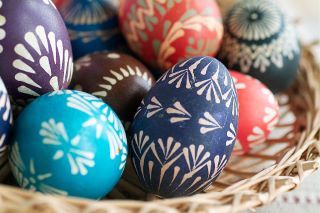
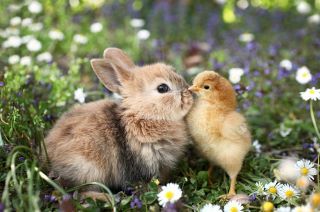
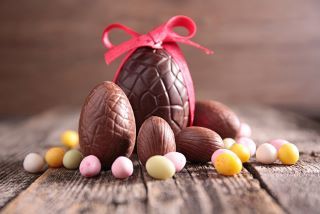
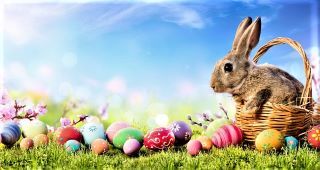
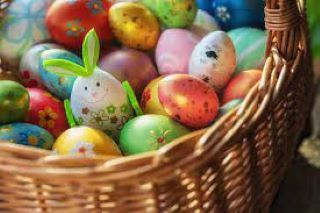
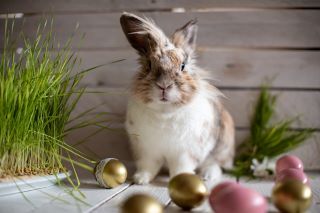
To this day, people from different cultures give each other dyed, painted or chocolate eggs, and some may even take part in an Easter Egg hunt!
I remember, as children, that we were itching to come home from Church quickly on Easter Sunday to see if the Easter Bunny had been! It's a tradition which has continued well into our adulthood with the grandchildren!
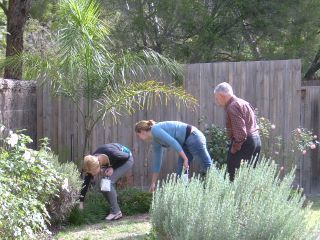
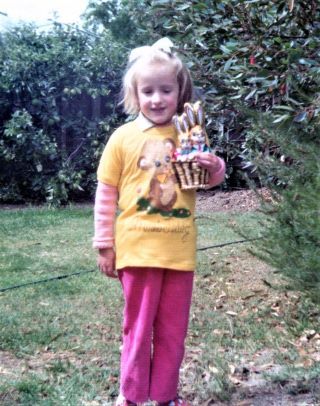
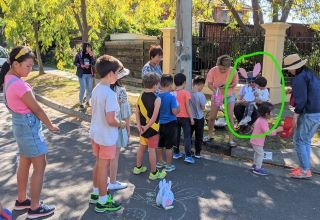
As mentioned, Easter Saturday is often a day spent preparing for Easter lunch, with slow roasted lamb and vegetables, cured ham, simnel cakes (a type of fruit and spice cake), Easter bread and Easter Bunny sweet treats perhaps on the menu!
You can read more about the traditions of eggs and other Easter foods in a past Easter blog, if you click here.
Please do write in and tell us of any favourite Easter traditions in your household, we would love to hear about them!
